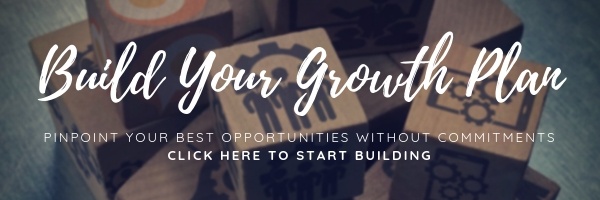Why Your Business Growth Plan Should Include Inbound Marketing
In today’s competitive landscape, businesses need a sustainable, scalable, and cost-effective approach to growth. While outbound marketing still has its place, inbound marketing has proven to be the key driver of long-term business success. If your business growth plan doesn’t include inbound marketing, you could be missing out on a powerful opportunity to attract, engage, and convert high-quality leads.
Inbound marketing isn't just a trend; it’s a customer-centric approach that aligns with how people make purchasing decisions today. Instead of interrupting potential customers with ads or cold calls, inbound marketing draws them in through valuable content, SEO, and targeted engagement.
Let’s explore why inbound marketing should be an essential part of your business growth plan and how it can fuel long-term success.
What Is Inbound Marketing?
Inbound marketing is a digital strategy that focuses on attracting potential customers through relevant content and experiences tailored to their needs. Unlike traditional outbound methods (cold calling, paid ads, direct mail), inbound marketing is designed to build trust and establish credibility before making a sales pitch.
The inbound methodology follows three key stages:
- Attract – Use SEO, content marketing, and social media to bring potential customers to your website.
- Engage – Provide valuable content, lead magnets, and email nurturing to convert visitors into leads.
- Delight – Use personalized interactions, automation, and customer support to turn customers into brand advocates.
By integrating inbound marketing into your business growth plan, you create a repeatable and scalable strategy that consistently brings in qualified leads.
Why Inbound Marketing Should Be Part of Your Business Growth Plan
1. Lower Cost, Higher ROI
Inbound marketing generates three times more leads per dollar compared to traditional outbound methods. Instead of spending heavily on paid ads and cold outreach, inbound focuses on organic growth through content, SEO, and social media—which continue to deliver results long after the initial investment.
2. Aligns with Customer Behavior
Today’s consumers are research-driven—they turn to Google, social media, and blogs before making decisions. Inbound marketing ensures that your brand shows up where your audience is searching, providing valuable information that positions you as a trusted expert.
3. Builds Long-Term Authority & Brand Trust
Inbound marketing doesn’t just sell—it educates and nurtures leads over time. By consistently delivering high-quality content, you position your business as an industry leader, making it easier for customers to trust and choose you over competitors.
4. Drives Sustainable Business Growth
Unlike paid ads, which stop working once the budget runs out, inbound marketing creates a compounding effect. A well-optimized blog post, an evergreen lead magnet, or a well-executed email sequence can generate leads for months or even years.
5. Helps Convert Visitors Into Leads & Customers
Inbound marketing doesn’t just attract traffic—it guides visitors through a structured journey that nurtures them into leads and customers. With lead magnets, email automation, and remarketing, you can convert cold traffic into paying customers.
How to Integrate Inbound Marketing Into Your Business Growth Plan
✅ Develop a Content Strategy – Create blog posts, guides, videos, and infographics that address your audience’s pain points.
✅ Optimize for SEO – Ensure your website and content rank for high-intent keywords to attract organic traffic.
✅ Use Lead Magnets – Offer valuable resources like free ebooks, templates, or webinars in exchange for email addresses.
✅ Leverage Email Marketing – Nurture leads with personalized email sequences that guide them through the buyer’s journey.
✅ Engage on Social Media – Build relationships and share valuable insights through LinkedIn, Twitter, and Facebook.
✅ Analyze & Optimize – Track KPIs like traffic, lead conversion, and engagement rates to refine your strategy over time.
Take the Next Step: Get Your Free Marketing Assessment
Your business growth plan should be data-driven, strategic, and customer-focused—and that’s exactly what inbound marketing helps you achieve. If you’re ready to evaluate and improve your marketing efforts, start with a free marketing assessment to identify opportunities for growth.
👉 Sign up for your FREE marketing assessment and start building a business growth plan that works!



